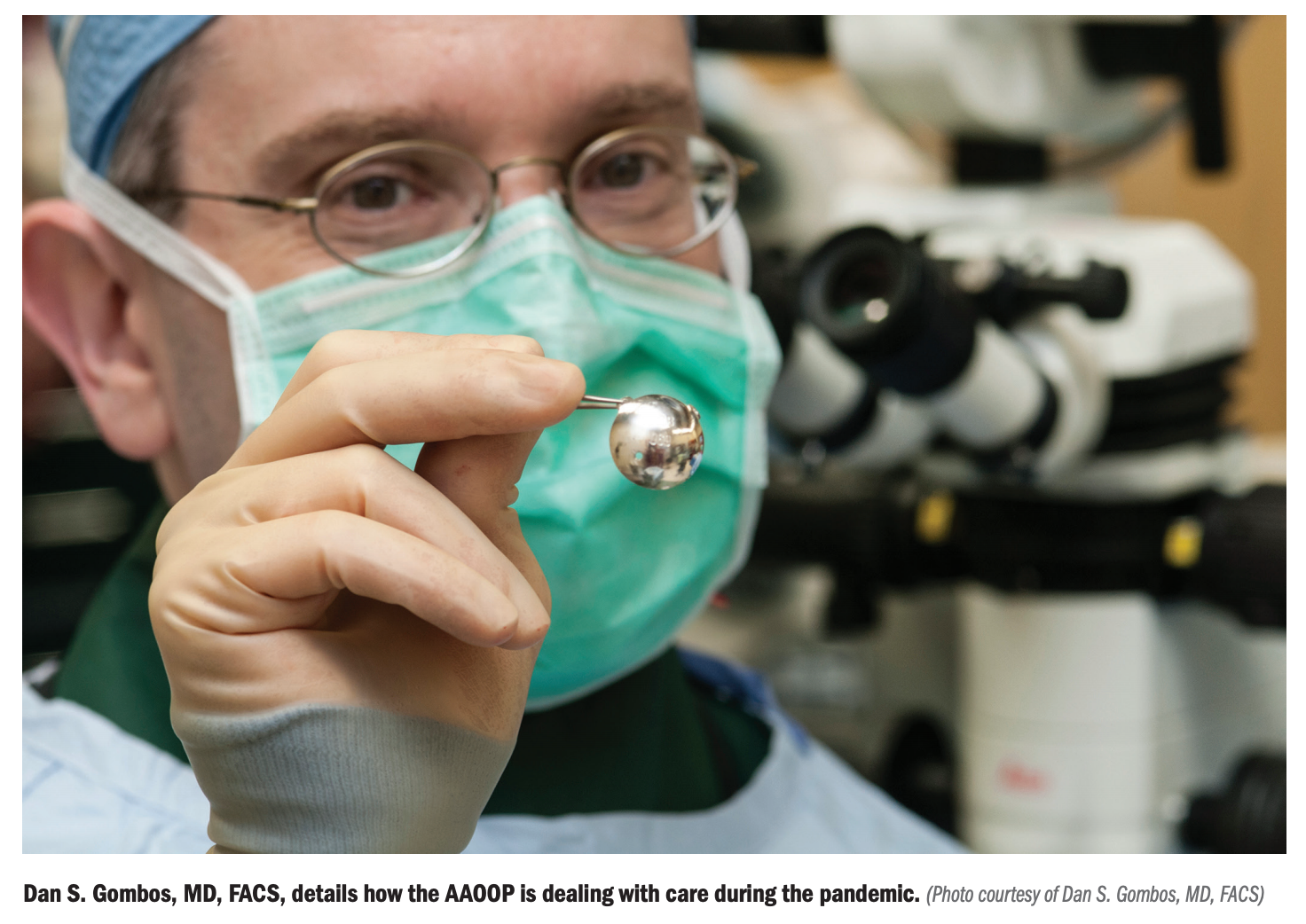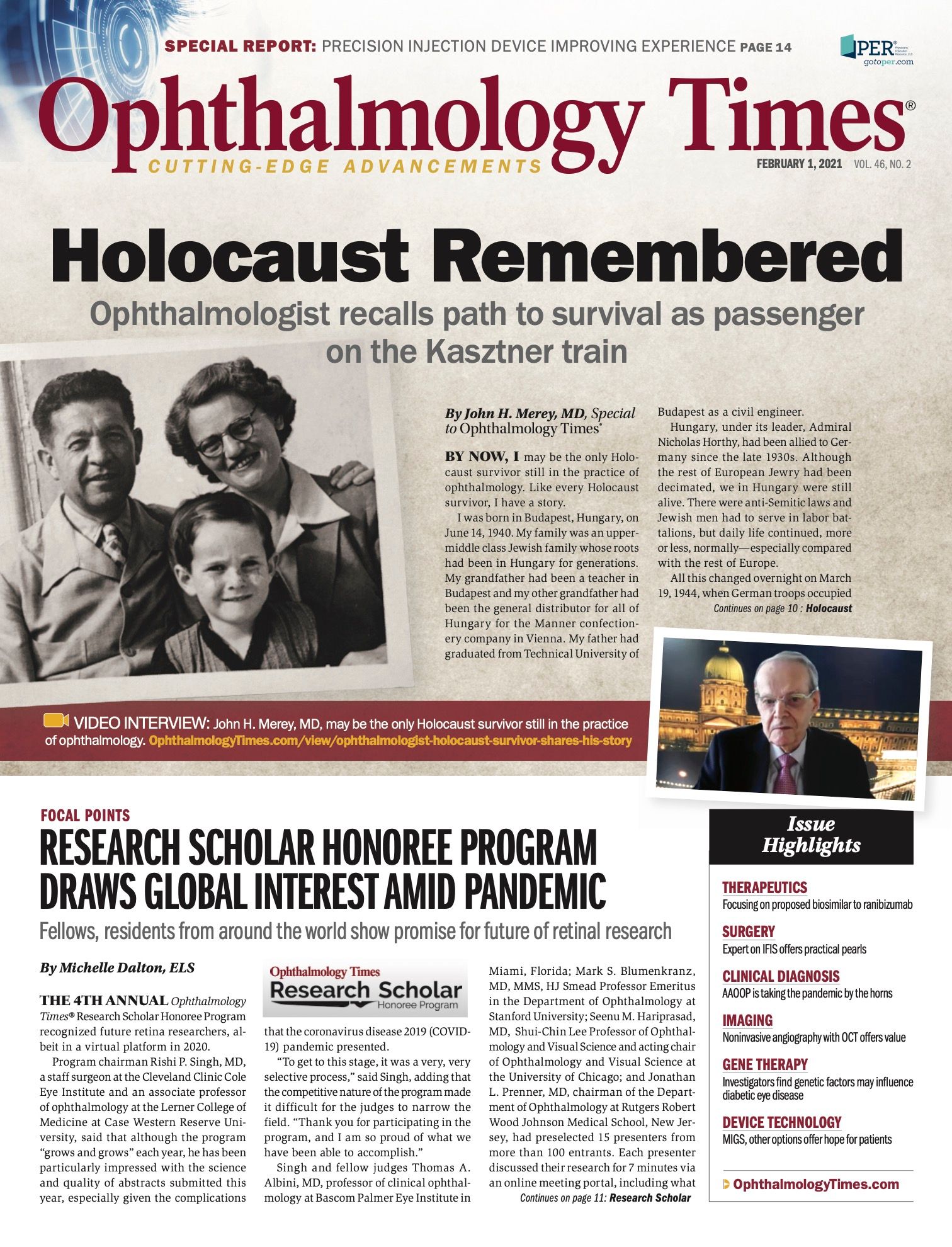Publication
Article
Digital Edition
How AAOOP is taking the pandemic by the horns
Author(s):
Organization works to ensure clinical care and access for high-risk patients.

This article was reviewed by Dan S. Gombos, MD, FACS
The coronavirus disease 2019 (COVID-19) pandemic has been a challenge worldwide, not only in attempts to minimize the spread of the virus and to treat desperately ill patients, but, according to physicians abroad, also by limitations placed on patient care.
European colleagues have warned their international counterparts about the transfer of ventilators from ocular oncology centers to other services and reduced access to chemotherapy for globe-salvaging techniques for retinoblastoma.
Related: Glaucoma care after COVID-19: The Pan-American view
After hearing of these warnings, the American Association of Ophthalmic Oncologists and Pathologists (AAOOP) moved to the forefront to deal with the hurdles.
“It was apparent to many of us in the US that we had to prepare for the possibility of government-imposed restrictions on clinical care,” said Dan S. Gombos, MD, FACS, who is president of AAOOP.
Gombos is a professor and chief of ophthalmology at The University of Texas MD Anderson Cancer Center in Houston, clinical co-director of the Retinoblastoma Center of Houston, and vice president of the International Society of Ocular Oncology.
At the onset of the pandemic, AAOOP initiated early advocacy with the American Academy of Ophthalmology (AAO) to work to ensure clinical care and access for patients with ophthalmic tumors and the related ophthalmic pathology needs, Gombos said.
Gombos underscored the need for continuity of care for these patients because delayed care carried with it risk to life, such as in the case of screening examinations for high-risk children with retinoblastoma or the need for urgent enucleation for some intraocular malignancies.
Related: Eyecare professionals advise on cleaning, disinfection guidelines to promote safety
The AAO advised AAOOP to create recommendations. Similar approaches were used with other professional ophthalmic subspecialties, surgical societies, and the American College of Surgeons, he said.
AAOOP’s goal was to identify a cohort of ophthalmic oncology and pathology experts and individuals from other subspecialties such as retina, oculoplastics, and pediatrics.
This would allow creation of parallel recommendations with colleagues in retina, the American Society of Ophthalmic Plastic and Reconstructive Surgery, and the United States and Canadian Academy of Pathology.
AAOOP also wanted to create a source document to facilitate care during the pandemic that would justify the use of certain resources when operating room resources and access were limited, Gombos explained.
This guide was published in Ocular Oncology and Pathology.1 The information then was forwarded to the AAO and sister ophthalmic societies and posted on AAOOP and AAO websites. Additional guidelines were formulated for the American College of Surgeons.
Related: Pearls for drawing patients back to your practice
Gombos explained that AAOOP used its website to communicate ongoing practice patterns early in the pandemic and collaborated with the Collaborative Ocular Oncology Group Uveal Melanoma Validation Study Number 2 (COOG2), a group of ocular oncologists that maintained a database of members who managed ocular neoplasms.
The COOG2 surveyed its member practitioners, and interval practice patterns were posted on AAOOP’s website.
AAOOP also created a survey and offered a way to perform ophthalmic telepathology for centers that did not have access to ophthalmic pathologists.
“Throughout the pandemic, AAOOP continued to advocate strongly for our patients and their practitioners,” Gombos said. “Our source documents have been referenced worldwide and were endorsed by the International Society of Ocular Oncology. Despite the challenges of the pandemic, we continue to see innovations and advances in our field, and we will continue to support our colleagues and patients during the pandemic.”
--
Dan S. Gombos, MD, FACS
e: dgombos@mdanderson.org
Gombos has no financial interest in any aspect of this subject matter.
Reference
1. Skalet AH, Allen RC, Shields CL, Wilson MW, Mruthyunjaya P, Gombos DS. Considerations for the management and triage of ocular oncology cases during the COVID-19 pandemic. Ocul Oncol Pathol. 2020;6(3):1-4. doi:10.1159/000507734

Newsletter
Don’t miss out—get Ophthalmology Times updates on the latest clinical advancements and expert interviews, straight to your inbox.





